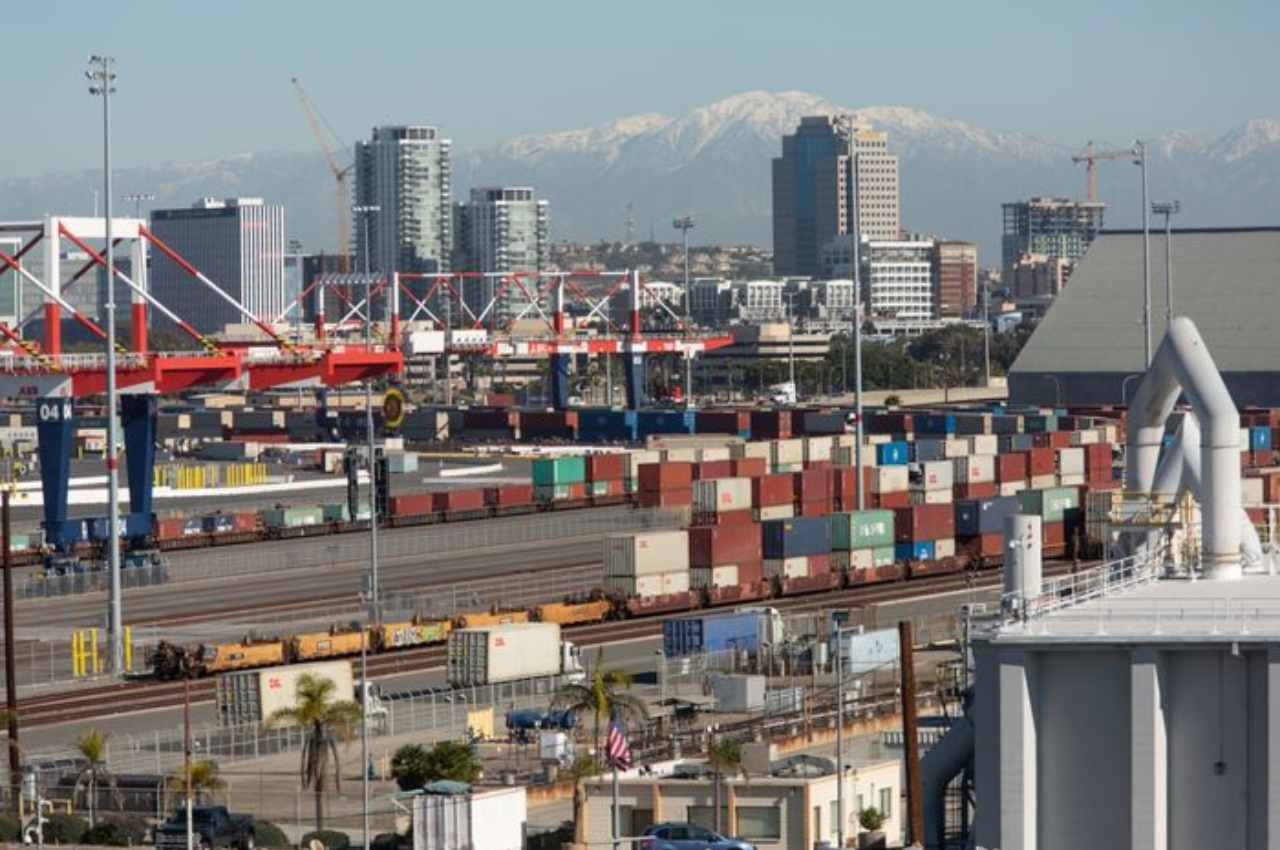New Delhi: The US economy contracted from April through June for the second consecutive quarter, shrinking at an annual rate of 0.9 percent and igniting concerns that the country might be headed for a recession.
The largest indicator of the economy, the Gross Domestic Product (GDP), declined by the amount the Commerce Department reported on Thursday. This came after a 1.6 percent annual loss from January through March. One informal, but not absolutely certain, sign of a recession is GDP decline over successive quarters.
The release of the report is crucial. Under the pressure of severe inflation and rising borrowing prices, consumers and companies have been struggling. In an effort to combat the worst inflation outbreak in four decades, the Federal Reserve hiked its benchmark interest rate by a hefty three-quarters of a point on Wednesday.
Also Read :-US GDP shrinks 0.9% last quarter, its 2nd straight drop
The famously challenging “soft landing” that the Fed is aiming for is an economic downturn that manages to contain skyrocketing prices without sparking a recession.
Even if the economy is showing signs of weakness, according to many analysts and Fed Chair Jerome Powell, they do not believe that a recession is underway. Many of them emphasise the still-vibrant labour market, which has 11 million job opportunities and an exceptionally low unemployment rate of 3.6 percent, as evidence that a recession, if it does materialise, is still some time off
The government’s first of three estimates of GDP for the April-June quarter released on Thursday shows a sharp decline from the 5.7 percent growth the economy had in 2017. That year’s expansion was the fastest in a calendar year since 1984, demonstrating how quickly the economy recovered from the devastating but short-lived pandemic recession of 2020.
Also Read :-India, Egypt aim to hit $12 bn trade in 5 years
But since then, the combination of growing prices and higher borrowing costs have taken a toll. Consumer price index data from the Labor Department showed a 9.1% increase over a year earlier in June, the highest rate since 1981. Additionally, prices are rising more quickly than incomes do despite widespread salary hikes. After accounting for inflation, average hourly wages fell 3.6 percent from a year earlier in June, marking the 15th consecutive monthly decline.
Consumer confidence has been damaged by the inflation increase and the public’s anxiety over a potential recession, and the economy is currently delivering frustratingly conflicting signals as a result. Additionally, as the November midterm elections draw closer, the unhappiness of the populace has lowered President Joe Biden’s public popularity ratings and raised the possibility that the Democrats may lose control of the House of Representatives and the Senate.
Spending by consumers is still increasing. However, Americans are becoming less confident: According to the Conference Board, a research organisation, their forecast for the state of the economy six months from now has dropped to its lowest level since 2013.
Risks of a recession have increased as a result of the Fed’s policymakers’ campaign of rate increases, which is expected to last until 2023. Credit card and vehicle loan rates have already increased as a result of the Fed’s rate increases, and the average rate on a 30-year fixed mortgage has doubled in the last year, to 5.5 percent. The number of homes sold has decreased, which is particularly susceptible to fluctuations in interest rates.
Many experts disagree that the economy is in a recession despite posting negative GDP for a second consecutive quarter.
Also Read :-‘Dangerous scam’ on WhatsApp: Do not make this mistake even by mistake, warns CID
The National Bureau of Economic Research’s Business Cycle Dating Committee defined a recession as “a major fall in economic activity that is spread across the economy and lasts more than a few months.” This definition is the one that is most commonly used to describe recessions.
Before publicly announcing the end of an economic growth and the beginning of a recession, the committee considers a variety of criteria, and it frequently succeeds in doing so after the fact.
The biggest retailer in the country, Walmart, cut its profit forecast this week, citing consumers’ reduced spending on many discretionary items like new clothing due to increasing gas and food prices.
According to the manufacturing index from the Institute for Supply Management, American companies have expanded for 25 months running, but supply chain bottlenecks have made it difficult for factories to satisfy orders.
However, the factory boom is now beginning to feel the strain. Last month, the ISM index fell to its lowest level in two years. Decrease in new orders. For the second consecutive month, factory hiring declined.
Read More :- Latest Business News
Click Here – Download The News 24 App













